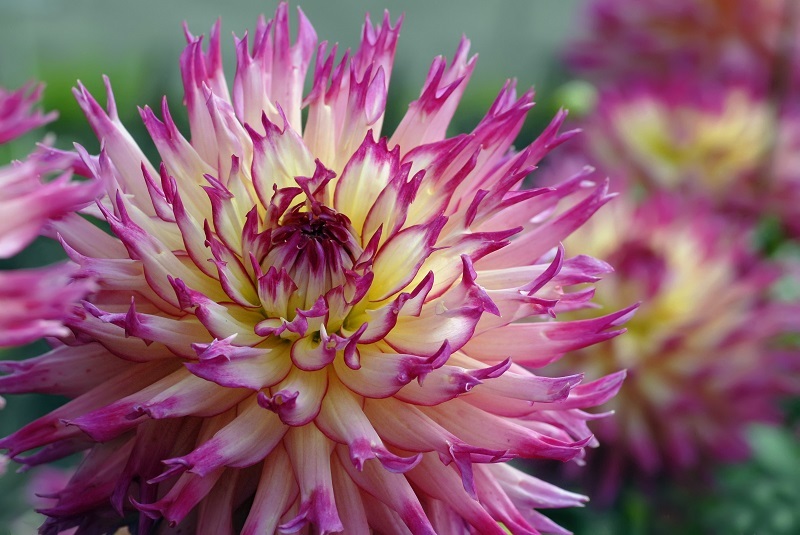Master the art of keeping cut flowers fresh
Posted on 13/08/2025
Master the Art of Keeping Cut Flowers Fresh: Your Complete Guide
Bringing a bouquet of fresh-cut flowers into your home instantly brightens any space. But wilted petals and drooping stems can quickly diminish their beauty. With a few expert strategies, you can keep cut flowers fresh and vibrant for much longer. In this comprehensive article, you'll discover the secrets to mastering the art of flower care--ensuring your arrangements stay lush, fragrant, and alive.
Why Cut Flowers Wilt - Understanding the Basics
Grasping why cut flowers wilt is the essential first step toward extending their vase life. When flowers are separated from their roots, they're no longer able to draw nutrients and moisture in the same way. Factors such as bacteria, exposure to heat, dehydration, and improper handling all hasten their decline. By addressing these problems proactively, you can dramatically extend the life and vitality of your arrangements.
Common Causes of Wilting in Cut Flowers
- Bacterial growth in water obstructing stems
- Dehydration due to lack of water uptake
- Exposure to direct sunlight and heat sources
- Air blocked stems from improper cutting

Preparing Cut Flowers for Maximum Freshness
Taking a few crucial steps when you first receive or pick your flowers will greatly impact their longevity. Here's what you need to do to extend cut flower life right from the start:
Clean Your Vase Thoroughly
- Wash your vase with hot, soapy water to remove any lingering bacteria or residue from previous floral arrangements.
- Rinse thoroughly and ensure the vase is completely free of soap before use.
Cut Stems Properly
- Use sharp, clean scissors or pruning shears to cut the bottom of each stem at a 45-degree angle.
- This increases the surface area for water absorption and prevents stems from sitting flat at the base of the vase.
- Trim 1-2 inches from the stem, and always cut under running water or submerge stems while cutting to avoid air bubbles (embolism) blocking water uptake.
Remove Lower Leaves and Foliage
- Strip any leaves that will be below the waterline in the vase. Leaves submerged in water rot quickly, encouraging bacterial growth.
- This simple task is vital for keeping flowers in a vase fresh for as long as possible.
The Perfect Water Recipe for Fresh Flowers
The right water solution is a non-negotiable aspect of preserving fresh cut flowers. Water alone isn't enough; it requires proper treatment to ensure blossoms remain vibrant and last for days or even weeks.
Use Room-Temperature Water
- Allow tap water to sit for several hours to dissipate chlorine or use filtered water if possible.
- Cold or hot water can shock delicate stems.
Feed Your Flowers
- Add a packet of flower food (usually included with bouquets) to the vase water.
- If you don't have flower food, make your own by mixing:
- 1 quart water
- 2 tablespoons lemon juice or white vinegar
- 1 tablespoon sugar (feeds the flowers)
- 1/2 teaspoon bleach (prevents bacteria)
Change Water Regularly
- Refresh the water and re-trim stems every 2-3 days.
- Rinse the vase thoroughly each time to remove any residue or bacteria.
- Keeping the water clear directly relates to prolonging cut flower freshness.
Optimum Placement: Ensuring Your Flowers Thrive
Location can make all the difference in extending the beauty of your florals. Strategic placement is a fundamental aspect of prolonging the life of cut flowers.
- Keep arrangements out of direct sunlight. While sunlight is essential for growing plants, it accelerates wilting in cut flowers.
- Avoid heat sources such as stoves, radiators, or electronic devices, as heat speeds up the evaporation of moisture from the flowers and the water.
- Stay away from ripening fruit like bananas or apples. These emit ethylene gas, a natural agent that quickens the maturation and aging of cut flowers.
- Opt for cooler areas in your home to markedly extend floral life.
Special Tips for Different Flower Types
Not all blooms are created equal; different types may require unique care to truly keep your cut flowers fresh at their peak:
- Roses: Remove all thorns and foliage below the waterline. After trimming, immediately plunge the stems into lukewarm water to prevent air bubbles from forming.
- Tulips: These continue to grow after being cut! Support them with taller vases, trim stems every couple of days, and refresh water often.
- Hydrangeas: Their woody stems benefit from a cut-and-crush treatment: lightly crush the tips after cutting to improve water absorption.
- Lilies: Remove pollen stamens as soon as buds open; stamens stain and shorten flower lifespan. Change water frequently.
- Daisies and Gerbera: Sensitive to bacteria. Change water daily, and use a clean vase to prevent rapid wilting.
DIY Tricks for Prolonging Cut Flower Freshness
Wondering if those age-old tricks really work? Here are a few creative, at-home methods for mastering the art of keeping cut flowers fresh:
- Aspirin: Crush and add one tablet into the vase water. The acidity lowers pH, making it easier for flowers to absorb water.
- Penny: Drop a copper penny in the vase. The copper acts as an antibacterial agent, helping suppress bacterial build-up.
- Vodka or gin: A few drops in the water can act as a preservative, slowing the ripening process.
- Soda: Add 1/4 cup of a clear, non-diet soft drink (like Sprite) to the water--its sugar nourishes blooms while acidity fights bacteria.
While these hacks can sometimes work, always prioritize proper flower food and fresh water replacement for best results.
Signs of Fading Flowers - When to Act
Recognizing early symptoms of declining health in your bouquet is key to saving it. Here's what to watch for to keep your cut flowers looking fresh longer:
- Cloudy, murky, or foul-smelling vase water - time to change it!
- Petals dropping or becoming discolored
- Leaves wilting or developing slime below waterline
- Stems feeling soft or mushy (remove affected flowers promptly)
- Blossoms drooping over - often signals dehydration or blocked stems
Act fast by trimming stems, cleaning the vase, and refreshing the water when you notice these changes.
Frequently Asked Questions About Fresh Cut Flowers
How long do cut flowers last in a vase?
Most flower varieties will last 5-7 days with proper care. Some, like carnations and orchids, may last up to two weeks--it all depends on species, freshness at purchase, and how well you look after them.
Should I refrigerate my cut flowers overnight?
If you have space, placing flowers in the refrigerator (away from fruits) overnight will significantly extend their freshness, as the cool environment slows the aging process.
Can wilting flowers be revived?
Sometimes! Remove wilting stems, re-cut at a sharp angle, and submerge in clean, lukewarm water. Place in a cool, shady spot; some flowers may perk up within a few hours.
Is bottled, filtered, or tap water best for my bouquet?
Filtered or distilled water is ideal, since it's free of chemicals and minerals that might affect flowers. If using tap, let it sit uncovered for a few hours to dissipate chlorine, which can harm blooms.
Eco-Friendly Flower Care Tips
Want to master keeping your cut flowers fresh in an environmentally conscious way? Try these sustainable practices:
- Repurpose spent flowers as compost or natural fertilizer.
- Use reusable, washable vases instead of disposable containers.
- Opt for locally-grown, seasonal flowers to reduce your carbon footprint and enjoy longer-lasting bouquets.
- Skip harsh chemical preservatives and experiment with homemade, natural alternatives.

Keep Cut Flowers Fresh: Troubleshooting and Pro Tips
- Always use clean tools and vessels to minimize bacteria.
- Arrange flowers loosely to allow good airflow and prevent molding.
- For tall bouquets, stagger stem heights so each cut receives optimal water.
- Mist delicate blooms gently with water to keep petals hydrated, especially in dry conditions.
- Rotate arrangements every couple of days to avoid uneven sun exposure or drying out one side.
- Remove dying stems promptly to prevent decay from spreading to healthy flowers.
Conclusion: Enjoy Vibrant Bouquets for Longer
With just a bit of care and knowledge, you really can master the art of keeping cut flowers fresh. Start with proper preparation, maintain clean water, and mind the placement of your arrangements. With these tips, your home or workspace can stay vibrant and cheerful as your flowers retain their beauty for days on end. Whether you nurture a single rose or a grand bouquet, a little extra attention is all it takes to keep your blooms looking their very best.







